Combating dry skin during cancer treatment
Among the many side effects of cancer treatment, dry skin is one of the most common. This is particularly the case with chemotherapy, which not only targets cancer cells but sometimes also skin cells. You can take action to alleviate these feelings of tightness. Each day, the most important thing you can do is moisturise.
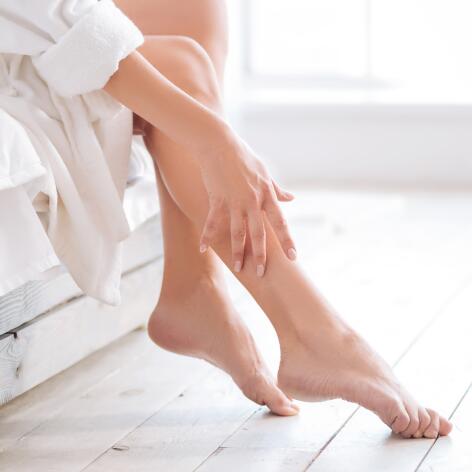
Do you know about “ xerosis ”?
This is the scientific name for skin dryness. It is not uncommon in treating cancer. It is often a simple dryness, with small scales that flake off like dandruff. It may be accompanied by itching or tightness. But it can also be more pronounced, with a cracked appearance on the legs or with cracks on the hands or feet. Even though some parts of the body are less visible, you should take care of them.
For dry skin, prevention is better
Did you know that some of our daily behaviours contribute to dry skin? For example, some conventional hygiene products (solid or liquid soaps) are often aggressive. Use cleansing oils, gels or dermatological bars that respect the hydrolipidic film and gently cleanse the skin. The water you use for washing is also important. Too hot (above 32 to 34°C) and it will make your skin even drier and reactivate the inflammation. Also, don't stay too long in the bath or shower to avoid prolonged contact with limescale and chlorine. And when drying, to limit irritation, dab with a towel and avoid rubbing.
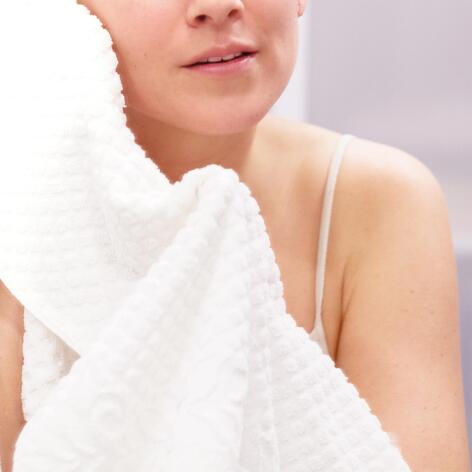
One of the most significant consequences of the treatments on my skin was extreme dryness. I had to moisturise my skin four to five times a day!
Mission hydration
To prevent your skin from drying out, use a moisturiser or emollient once or twice a day, giving preference to products with the fewest ingredients, without preservatives, alcohol or fragrances that can irritate.
For your face
Choose moisturising creams with rich textures. Apply your treatment with your fingertips to your forehead, cheeks and neck. Then smooth from the centre to the contours of the face. And in case of redness, opt for soothing creams for hypersensitive skin. You can also apply a moisturising mask one to three times a week in a thick layer, leaving it on for five to ten minutes. And why not use soothing thermal spring water compresses on your face and neck?
Don't forget your eyes and lips
Your eye area and lips also need moisturising. For the former, apply a soothing “ eye contour ” care product with your fingertips every day. And why not take advantage of your face mask to apply thermal spring water compresses to your eyelids? For your lips, use a cold cream stick balm two to three times a day. Good thing: you can apply your lipstick over it. Lastly, if your lips are chapped, use a repairing balm.
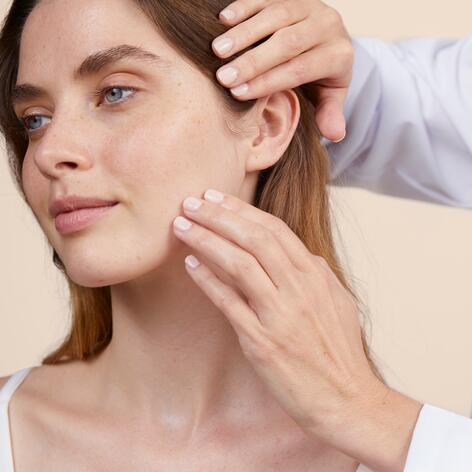
During treatments, don't forget your scalp
After hair loss, your scalp is extremely sensitive. The skin may become irritated, dry and flaky. Gently massage your head with warm water. You can use a gel, a cleansing oil, or a (soap-free) dermatological bar. After drying gently, apply a moisturiser or anti-itch cream.
FRIENDLY (AND EXPERT) ADVICE
To moisturise the rest of your body, be gentle here too!
Start by spreading your emollient between your hands. Then dab it onto your skin. Finally, rub it in with the entire surface of your hands in large, gentle, circular motions without pressing. There is no need to rub, as this may irritate your skin. A tip: applying the emollient to slightly damp skin will be even easier.
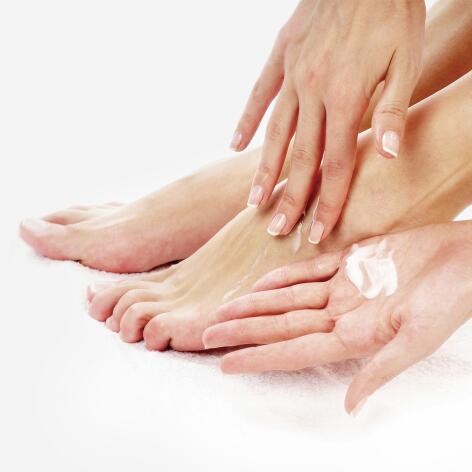
And don't forget your hands and feet!
Treatments can also dry out the skin on your hands and feet. “ Hand-foot syndrome ” (redness or severe dryness on the palms of the hands and soles of the feet) is one of the side effects of some chemotherapies or targeted treatments. You will then be more susceptible to cracks and bleeding. Like the rest of your body, think hydration. Even before you see the first signs of irritation, generously coat your hands or feet with an emollient. Tip: for maximum hydration, at bedtime, or even during the day, after applying a thick layer of cream, cover your hands and feet with gloves or loose cotton socks.
Our solutions for dry skin
Eau Thermale Avène skincare products designed to help you feel better about your skin
- Thermal Spring Water Spray
Thermal Spring Water
Thermal Spring Water SpraySoothes - Restores the skin barrier - Calms
NEWSLETTER
We’re always here for your skin!
All our tips for taking care of your skin day to day.
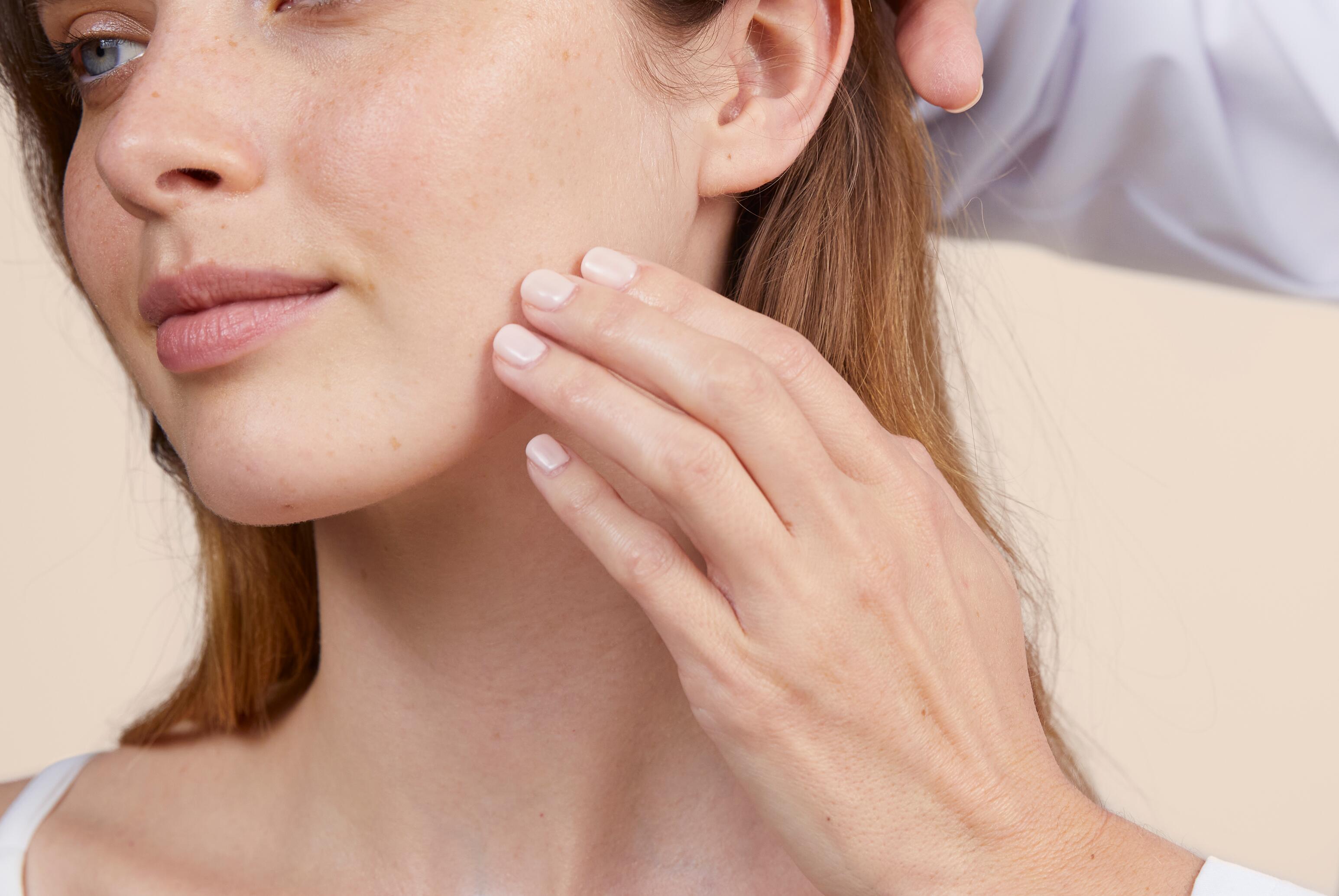
Which skin care routine should you adopt?
Identify what it really needs with the help of our experts and discover the most suitable skin care routine for you.


